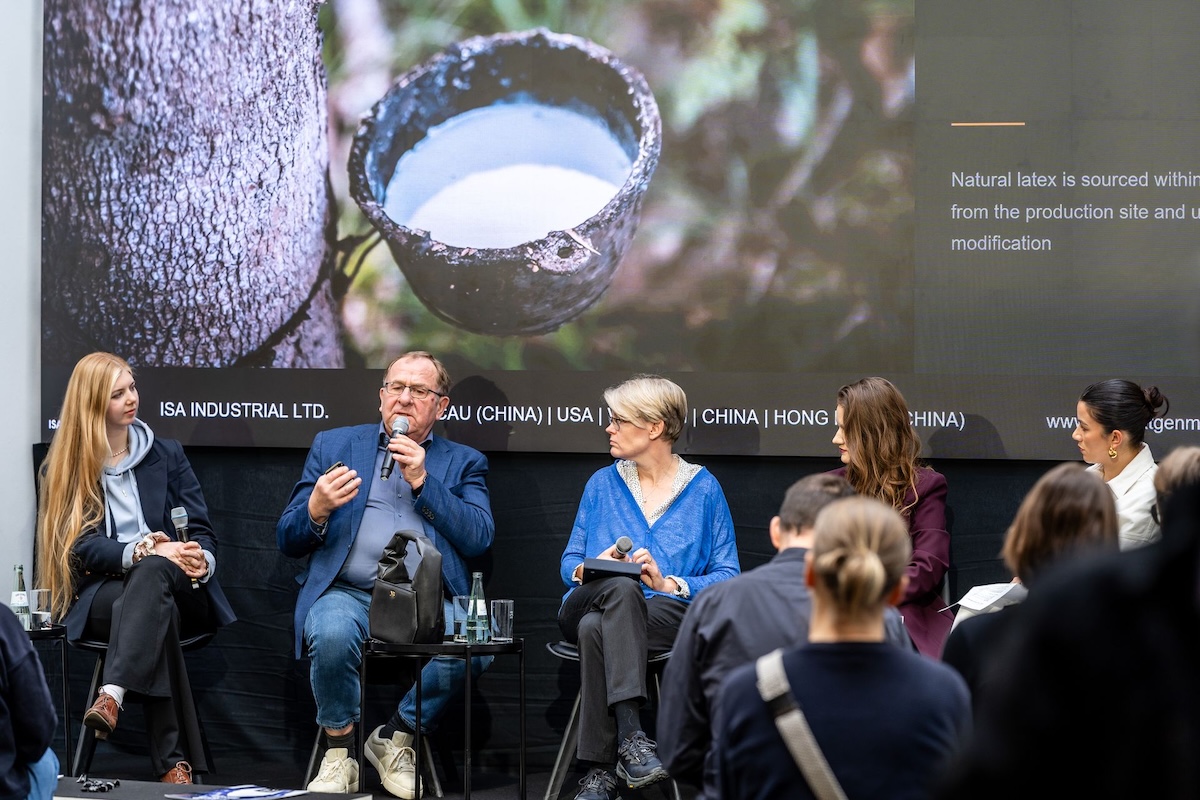Sustainable materials will only prevail if they also convince according to economic, qualitative and fashionable criteria. The leather and material experts Tom Schneider (ISA ANTEC), Cornelia Wittke (Ecovative), Sabrina Kliese (Revoltech) and Melina Bucher agreed on the ILM as part of a discussion about innovative materials. Success is based on a commercial strategy, industry partnerships and customer service on the part of the material developers.
At the beginning, Tom Schneider made it clear: “We make an alternative to plastic. The company is not only one of the world’s leading tanneries, but also develops sustainable materials such as Hyphalite. This bio -based material is characterized by good performance, but fights for acceptance on the part of the processing brands. A problem from Schneider’s point of view: “market the shoe and leather goods industry, bio content ‘not.” The higher price must be explained to consumers. “Then many customers are also ready to pay for it.”
Melina Bucher produces bags for her label of the same name from “Mirum”. This is a plastic -free leather alternative made of natural rubber, vegetable oils and growth, natural pigments and minerals. In their experience, consumers accepted a price surcharge of 10 percent. “But that’s it.”
In order to get a competitive price level, material developers would have to build on a scalable technology from the start, said Cornelia Wittke. This is not guaranteed, especially for products from the laboratory. Wittke works at Ecovative. The company specializes in the development and scaling of sustainable, natural -based technologies from Myzel, the roots of mushrooms. These skins would grow within nine days and allowed quick development. Wittke’s wish: Bio -based materials would have to be built up as an independent category. Leather and bio -based materials could then exist together on the market, Sabrina Kliese agreed. Your company Revoltech developed “Mattr” – a material based on algae.
The cooperation between material manufacturers and the brand industry does not only fail due to the price. Sabrina Kliese explained that new materials had other properties during processing. “So they don’t behave one to one like plastic.” Openness to experiments would therefore be challenged – but the big brands are probably not necessarily. Because these let them be manufactured by third parties, added Melina Bucher. It is therefore difficult for innovators to cooperate with them. According to Tom Schneider, the industry is in “a vicious circle”, because: “The prices only go down when scaled and the materials are used.”
Where will the industry be in five years?
“I hope that more brands from the middle price segment rely on bio -based materials,” Maria Bucher replied accordingly when asked what the industry had achieved in five years. This only seems essential for economic reasons, as Cornelia Wittke explained. “Some materials have to be used and are not there. Tom Schneider appealed in the same direction: “The financing is a problem. Sabrina Kliese was optimistic and focused on the progress of product development. “In five years, we will have the first products from the second generation of biobasized materials.”






Leave a Reply